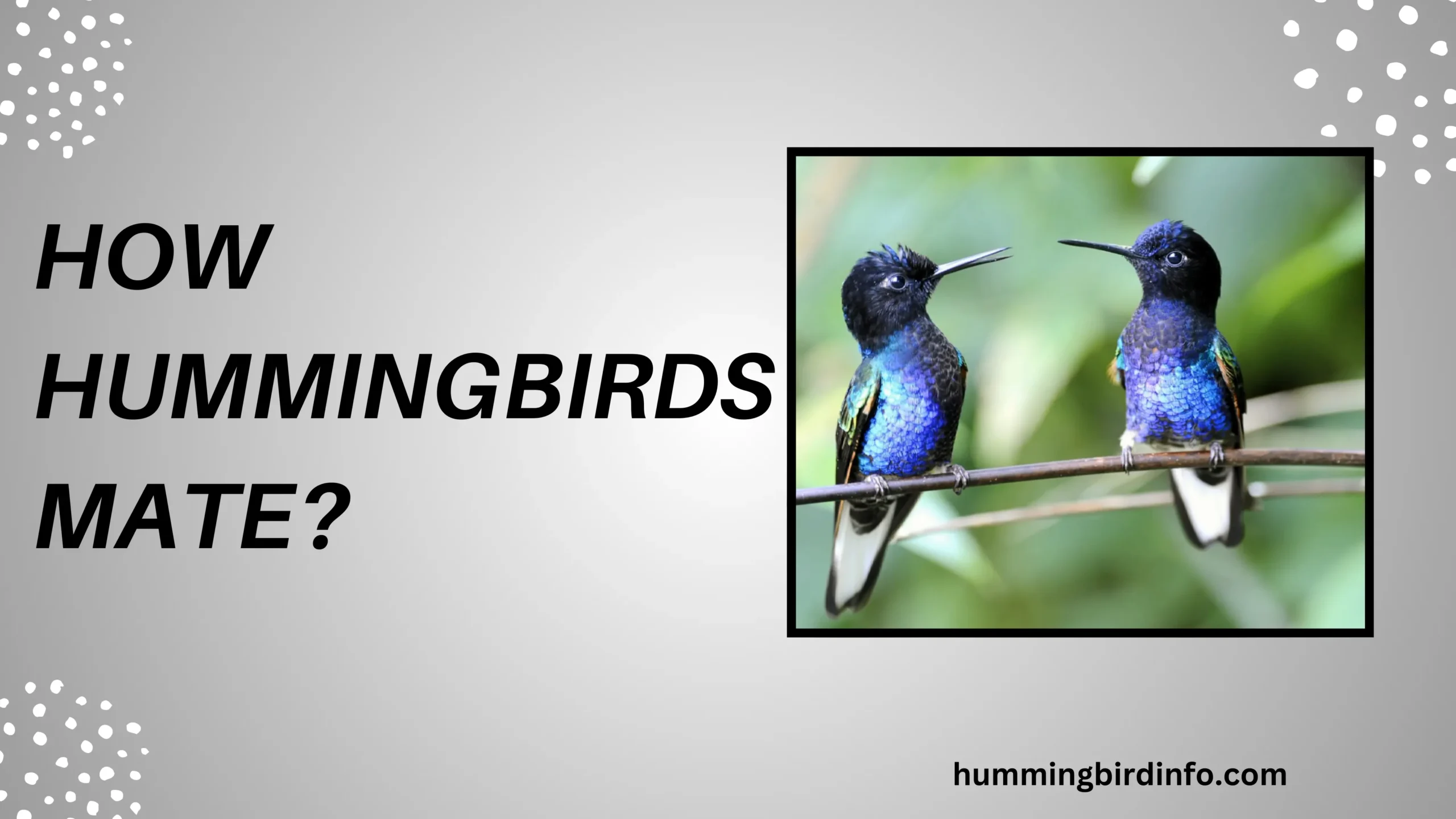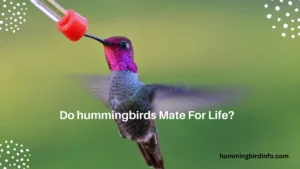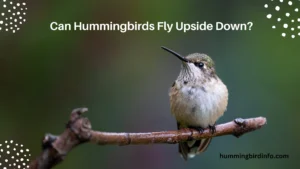Hummingbirds live fast-paced lives, powered by an incredibly high metabolism that demands constant energy. Their quick movements and rapid heartbeats mirror their equally swift and vibrant mating rituals, which are both captivating and competitive.
While these tiny birds are often admired for their beauty, their love lives are just as fascinating.
When mating season arrives, male hummingbirds put on one of nature’s most dazzling performances. From aerial dives to shimmering throat displays, they go to great lengths to impress females.
But despite all this effort, there’s no romance or long-term bond—mating is brief, and the female handles everything else.
This blog explores the rituals and realities of how hummingbirds mate. We’ll uncover their elaborate courtship displays, intense male competition, selective female choices, and the independent role of the mother in raising the next generation.
By the end, you’ll understand not only how these birds mate but also what makes their reproductive strategies so unique.
Contents
- 1 The Art of Attraction – Courtship Displays
- 2 Competition and Choice – The Dynamics of Mate Selection
- 3 The Brief Encounter – Copulation and Its Aftermath
- 4 The Female’s Role – Nesting and Parental Care
- 5 Evolutionary Drivers and Regional Variations
- 6 Conclusion
- 7 FAQs
- 8 1. Do hummingbirds mate for life?
- 9 2. How long does hummingbird mating last?
- 10 3. Do male hummingbirds help build the nest?
- 11 4. Why do male hummingbirds have bright colors?
- 12 5. What is a lek in hummingbird behavior?
- 13 6. Do hummingbirds fight over mates?
The Art of Attraction – Courtship Displays
Male hummingbirds don’t rely on luck—they use stunning aerial displays to impress females. A signature move is the “courtship dive,” where a male ascends over 60 feet before plummeting in a U-shaped swoop. At the last second, he pulls up dramatically, showing off his speed and control.
Along with acrobatics, males use iridescent plumage, particularly the gorget (throat patch), to catch attention. These feathers reflect light to produce shimmering colors like red, purple, or orange. They can tilt and flare their gorgets during flight to maximize brilliance from specific angles.
Vocalization plays a vital role too. Males produce buzzes, trills, and chirps, sometimes using their wing feathers to add whistling sounds. These sounds create a complete sensory display designed to highlight the male’s fitness and energy.
Each hummingbird species adds its own twist. For instance, the Anna’s Hummingbird performs dives accompanied by explosive tail sounds, while others include hover dances or zigzag flights. Some species even gather in leks, communal sites where multiple males compete through synchronized displays.
These performances are not just beautiful—they’re a test of stamina, agility, and attractiveness. Only males with the most impressive shows gain the attention of a selective female, making the art of attraction highly competitive and evolutionarily significant.
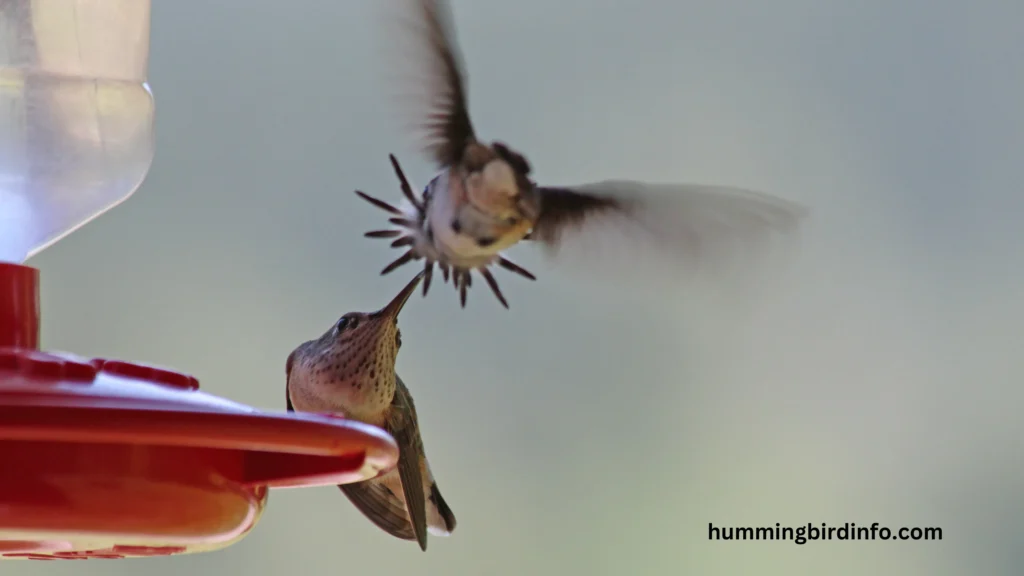
Competition and Choice – The Dynamics of Mate Selection
Male hummingbirds are territorial, especially during mating season. They choose prime areas filled with nectar-rich flowers and convenient perches to display from. These territories serve as both a stage and a food source that can influence female decisions.
Males fight fiercely to protect their display zones. They chase intruders, engage in mid-air battles, and use vocal threats to establish dominance. It’s a high-energy, high-stakes game, often involving physical contact between rivals.
Females don’t mate with the first suitor they see. Instead, they evaluate males based on their display vigor, plumage brilliance, and even the quality of their territory. A strong male with bright colors and good resources has a much better chance.
This intense female selectivity may reflect a deeper assessment of genetic quality. Brighter plumage and energetic displays suggest a male is healthy and resilient, which is beneficial for offspring. This drives sexual selection, shaping hummingbird traits over generations.
Hummingbirds practice a polygynous system, meaning males often mate with multiple females. Once mating occurs, the male quickly moves on, hoping to reproduce as often as possible during the brief breeding season.
The Brief Encounter – Copulation and Its Aftermath
For all the elaborate effort that leads up to it, mating itself is surprisingly fast. It happens on a perch, not in flight. The male briefly mounts the female, and the act involves cloacal contact—a quick touch to transfer sperm.
After copulation, the male and female part ways immediately. No pair bond forms, and the male provides no assistance with nesting or child-rearing. His role in reproduction ends almost as quickly as it began.
With no emotional ties, the male resumes his display rituals elsewhere. His focus remains on finding other mates, continuing the reproductive cycle with as many females as possible. It’s an evolutionary strategy to maximize genetic spread.
The female, meanwhile, takes full responsibility. From this point forward, she will handle everything alone—from building the nest to raising the chicks. Her role is both vital and demanding, but she’s equipped for it.
This separation of roles—males for display and mating, females for parenting—makes hummingbird reproduction one of nature’s most efficient, if emotionally distant, strategies.
The Female’s Role – Nesting and Parental Care
After mating, the female begins the delicate process of nest building. She selects a safe, concealed spot—often on a thin branch or forked tree limb—and gathers materials like spider silk, plant fibers, and moss for construction.
The use of spider silk gives the nest its remarkable elasticity. This allows it to expand as the chicks grow, while lichen and moss offer excellent camouflage. The result is a tiny, cup-shaped nest that is both strong and discreet.
She lays two tiny white eggs, no bigger than jelly beans. The incubation period typically lasts around 14 to 18 days, during which the mother leaves briefly to feed, then returns to warm the eggs. It’s a careful balance between hunger and protection.
Once the eggs hatch, the chicks are blind, featherless, and completely dependent. The mother feeds them a regurgitated mixture of nectar and insects—providing both energy and vital protein for rapid development.
Chicks grow fast, sprouting feathers within days. They fledge in 18 to 28 days, but the mother may continue to feed and protect them for a short while longer. Throughout this journey, she remains the sole caregiver, a model of avian dedication.
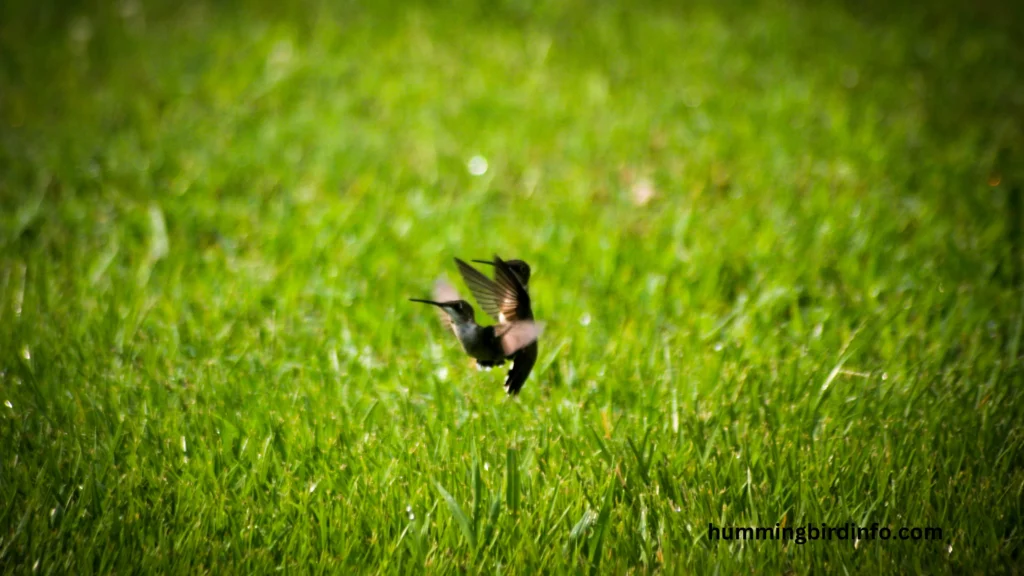
Evolutionary Drivers and Regional Variations
The elaborate courtship rituals of hummingbirds are shaped by sexual selection. Females consistently prefer males with more intense displays and vivid plumage, pushing males to evolve flashier traits over time.
Natural selection also plays a role. Mating behaviors must balance impressing females while avoiding predators, conserving energy, and navigating environmental challenges. It’s a fine-tuned dance of beauty and survival.
Hummingbird mating behavior varies by region and species. Some begin breeding in early spring, while others wait for peak flower bloom. Certain species display unique regional dives or vocal patterns.
Climate and food availability also influence courtship timing and strategy. In harsh climates, mating may be more intense and competitive, as fewer resources mean fewer chances to reproduce successfully.
This diversity shows how flexible and adaptive hummingbird reproduction can be. Despite their small size, these birds adjust their behaviors with incredible precision to suit their environment and evolutionary pressures.
Conclusion
Hummingbird mating rituals are a stunning mix of agility, color, and competition. From high-speed aerial dives to dazzling throat displays, every part of the male’s performance is designed to win the attention of a female—who holds the power of choice.
But beyond the beauty lies a harsh reality: no pair bonding, no shared parenting. Males vanish after mating, and the entire burden of raising the next generation falls to the female. It’s a system that prioritizes efficiency over emotional connection.
The evolution of these rituals reveals how sexual selection shapes behavior, and how survival demands influence every step of the process. Every shimmer of a feather and twist of a flight path has been honed by generations of mating pressures.
Understanding how hummingbirds mate gives us more than just trivia. It offers a window into the resilience, intelligence, and independence of these incredible creatures. Their love lives may be fleeting, but their impact on nature is profound.
So next time you spot a hummingbird darting through your garden, remember—it’s not just searching for nectar. It may be performing a high-stakes dance in one of the most mesmerizing mating games in the animal kingdom.
FAQs
1. Do hummingbirds mate for life?
No, hummingbirds do not form pairs or mate for life. After mating, the male leaves and plays no role in raising the young.
2. How long does hummingbird mating last?
Mating is very brief, often lasting only a few seconds. The act happens quickly on a perch through cloacal contact.
3. Do male hummingbirds help build the nest?
No, only the female builds the nest, lays the eggs, and cares for the chicks. Males focus solely on mating.
4. Why do male hummingbirds have bright colors?
Their iridescent plumage attracts females. The brightness signals health, strength, and genetic quality.
5. What is a lek in hummingbird behavior?
A lek is a communal display area where males perform courtship displays to compete for female attention.
6. Do hummingbirds fight over mates?
Yes, males often fight over territory and display spaces. They may chase or even physically attack rivals.

